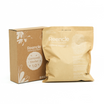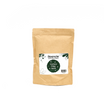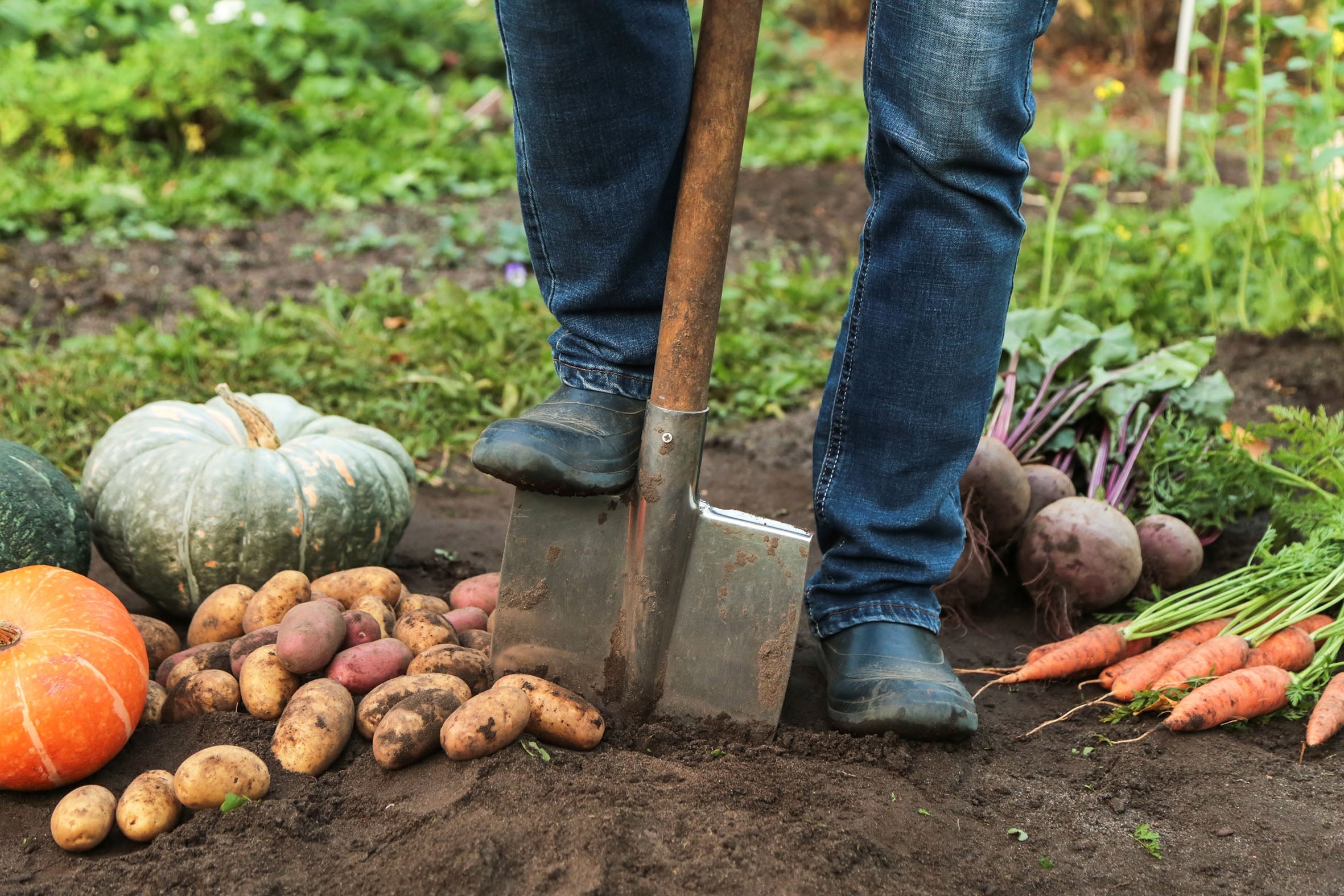Glossary of Composting

Here's a glossary of terms related to composting
🌿 Actinomycetes
Actinomycetes are a group of bacteria that share characteristics with bacteria and fungi. They play a crucial role in composting by breaking down complex organic compounds.
🌿 Aerate/Aeration
The process of introducing air into the compost pile to facilitate decomposition.
🌿 Aerated Static Pile
A composting system where air is forced through a static pile of materials, enhancing aeration and promoting aerobic conditions.
🌿 Aerobic
Occurring in the presence of oxygen.
🌿 Aerobic decomposition
The breakdown of organic matter in the presence of oxygen, resulting in the production of carbon dioxide, water, and humus.
🌿 Aerobic respiration
The process by which microorganisms in the compost pile use oxygen to convert organic matter into energy, carbon dioxide, and water.
🌿 Agricultural waste
Residue generated from farming activities, including crop residues, straw, and other plant materials, often used as composting feedstock.
🌿 Ambient Temperature
The temperature of the environment outside the compost pile.
🌿 Ammonia (NH3)
A pungent gas comprised of hydrogen and nitrogen produced during the decomposition of nitrogen-rich materials.
🌿 Ammonium (H4N+)
A form of nitrogen that can be present in compost. The conversion of ammonia to ammonium is part of the nitrogen cycle in composting.
🌿 Anaerobic
Occurring in the absence of oxygen.
🌿 Anaerobic decomposition
The breakdown of organic matter without oxygen, often leading to methane gas production and foul odors.
🌿 Anion
A negatively charged ion, often associated with nutrient elements in the composting process.
🌿 Alkaline
A pH greater than 7 indicates a basic or alkaline condition.
🌿 Allelopathy
The inhibitory or stimulatory effect of one plant on another through the release of biochemicals.
🌿 Amino Acids
Organic compounds essential for the growth of microorganisms involved in composting.
🌿 Bacteria
Microscopic organisms that play a vital role in decomposing organic matter during composting.
🌿 Balance
Achieving a proper ratio of carbon to nitrogen (C:N ratio) and a balance between green and brown materials for efficient composting.
🌿 Base Saturation Percentage
The proportion of soil occupied by basic cations (calcium, magnesium, and potassium) in relation to the total cation exchange capacity.
🌿 Bedding
Material, such as straw or wood chips, added to compost bins to provide structure and aeration.
🌿 Bin composting
Composting organic materials in a designated container, such as a wooden bin, plastic bin, or worm bin.
🌿 Biochemical Oxygen Demand (BOD)
A measure of the amount of dissolved oxygen microorganisms require to decompose organic matter in water.
🌿 Biodegradable
Materials capable of being broken down naturally by living organisms, typically bacteria and fungi.
🌿 Biodiversity
The variety of life in a particular ecosystem, including the diversity of plant and animal species involved in composting.
🌿 Biogas
A mixture of gases (primarily methane and carbon dioxide) produced through the anaerobic decomposition of organic matter.
🌿 Biological
Pertaining to living organisms or the study of life.
🌿 Browns
Materials high in carbon, such as dry leaves, straw, or newspaper, used in composting to balance the carbon-to-nitrogen ratio.
🌿 Buffering
The capacity of a compost system to resist changes in pH levels, ensuring a stable and favorable environment for microbial activity.
🌿 Bulk density
The mass of compost per unit volume, measuring how tightly the compost is packed. Proper bulk density is important for airflow and porosity in the compost pile.
🌿 Bulking agent
Material added to compost to improve structure, aeration, and moisture retention. Common bulking agents include straw, wood chips, or shredded cardboard.
🌿 Carbon Dioxide (CO2)
A colorless, odorless gas produced during the decomposition process in composting and released into the atmosphere.
🌿 Carbon-to-Nitrogen Ratio (C:N Ratio)
The ratio of carbon to nitrogen in compost materials, that affects the efficiency of decomposition and nutrient balance.
🌿 Castings
Rich, nutrient-dense soil created by earthworms during the process of vermicomposting.
🌿 Cation
A positively charged ion, often referring to nutrients such as calcium, magnesium, and potassium in soil.
🌿 Cation Exchange Capacity (CEC)
The ability of soil to hold and exchange cations, influencing nutrient availability for plants.
🌿 Cellulose
A complex carbohydrate found in plant cell walls, a major component of organic materials in compost.
🌿 Chemical
Any substance with a distinct composition, often used in the context of synthetic or manufactured materials in compost.
🌿 Chemical Oxygen Demand
A measure of the amount of oxygen required to break down organic and inorganic materials in water, indicating water quality.
🌿 Compaction
The compression of compost materials, reducing pore space and impeding airflow, leading to anaerobic conditions.
🌿 Compost
The nutrient-rich, humus-like material resulting from the decomposition of organic waste.
🌿 Compost Covers
Protective layers, often made of straw or other materials, placed on top of compost piles to regulate temperature and moisture.
🌿 Compost Stability
The degree to which compost has completed the decomposition process and is suitable for use without causing issues like nitrogen depletion.
🌿 Compost Tea
A liquid extract made from steeping compost in water, used as a nutrient-rich liquid fertilizer for plants.
🌿 Composting
The natural process of breaking down organic matter into compost through the action of microorganisms.
🌿 Contaminant
Unwanted or harmful substances in compost, such as pesticides, metals, or non-organic materials.
🌿 Cover Crop
A crop planted to cover and protect soil during periods when the main crop is not growing, helping prevent erosion and adding organic matter.
🌿 Decay
The natural process of gradual deterioration or rotting of organic matter.
🌿 Decompose
To break down organic matter into simpler compounds through the action of microorganisms.
🌿 Decomposers
Organisms, such as bacteria and fungi, that break down organic matter during the decomposition process.
🌿 Decomposition
The breakdown of complex organic compounds into simpler substances, facilitated by microorganisms.
🌿 Density
The mass or weight of compostable materials per unit volume, which can affect the aeration and efficiency of the composting process.
🌿 Diversity
The variety of different materials, microorganisms, and organisms present in a compost pile, contributing to a more balanced and effective composting process.
🌿 Dry Matter
The solid content in organic materials, excluding water. Monitoring dry matter helps in achieving the right moisture balance in a compost pile.
🌿 Earthworm Castings
The nutrient-rich excrement produced by earthworms as they digest organic matter. It is a valuable component of compost.
🌿 Enumeration
The process of counting and assessing the population of microorganisms, such as bacteria and fungi, in compost.
🌿 Enzyme
A protein that acts as a catalyst in biochemical reactions, speeding up the decomposition process in compost by breaking down organic matter.
🌿 Exchange Capacity
The ability of compost to hold and exchange essential nutrients with plant roots.
🌿 Fabric Covers
Protective covers made of fabric materials used in composting systems to regulate moisture, temperature, and aeration.
🌿 Feedstocks
The materials used as inputs for composting, including kitchen waste, yard debris, and other organic materials.
🌿 Fertilizer
A substance added to soil or plants to enhance nutrient levels, compost can serve as a natural fertilizer.
🌿 Fertilizer Value
The nutrient content of compost, often measured by levels of nitrogen, phosphorus, and potassium.
🌿 Filter
A material or system used to separate unwanted particles or substances from compost, helping refine the process.
🌿 Flocculation
The clumping together of particles in compost due to the formation of aggregates, improving structure and aeration.
🌿 Foliar
Pertaining to the application of nutrients or fertilizers directly to the leaves of plants.
🌿 Forced Aeration
The deliberate introduction of air into the composting process using mechanical systems to enhance microbial activity.
🌿 Fresh Compost
Compost that has recently completed the decomposition process and is ready for use.
🌿 Fungal Disease
A disease caused by fungi that can affect plants, but proper composting can help suppress harmful fungi.
🌿 Fungi
Microorganisms that play a crucial role in decomposing, breaking down complex organic materials in compost.
🌿 Greens
Nitrogen-rich materials in composting, such as fresh plant matter, kitchen scraps, and green vegetation.
🌿 Grinding
The process of breaking down or shredding large compostable materials into smaller particles, increasing surface area for faster decomposition.
🌿 Gypsum
A mineral sometimes added to compost to improve soil structure and drainage.
🌿 Heavy Metals
Metallic elements like lead, mercury, and cadmium that can be harmful if present in excessive amounts in compost.
🌿 Herbicides
Chemical substances used to control or eliminate weeds, which can persist in compost and affect plant growth if not properly decomposed.
🌿 Hot Pile
A compost pile that reaches elevated temperatures due to increased microbial activity, speeding up the decomposition process.
🌿 Humic Acid
A complex organic compound formed during the decomposition of plant and animal matter, contributing to soil structure and fertility.
🌿 Humification
The process of transforming organic matter into humus through microbial decomposition.
🌿 Humin Acid
A component of humic substances formed during the later stages of decomposition, contributing to soil structure.
🌿 Humus
The stable, organic component of soil formed by decomposing plant and animal matter, providing nutrients and improving soil structure.
🌿 Hydrogen
An element present in organic matter, involved in various chemical reactions during composting.
🌿 Hydrogen Sulfide
A foul-smelling gas produced during anaerobic decomposition, indicating poor aeration in the compost pile.
🌿 Inoculants
Substances containing beneficial microorganisms added to compost to enhance the decomposition process.
🌿 Inorganic
Materials that do not contain carbon-hydrogen (C-H) bonds, often referring to synthetic or mineral components.
🌿 In-vessel Composting
Composting that takes place in enclosed containers or vessels, providing control over environmental factors.
🌿 Landfills
Sites for the disposal of solid waste in a controlled manner, different from composting, as it involves waste burial without active decomposition.
🌿 Lignin
Complex organic polymer found in plant cell walls, providing structural support; it decomposes slowly and is a key component of "browns" in compost.
🌿 Lime
A material containing calcium carbonate used to adjust pH levels in the compost pile, especially important in the presence of acidic materials.
🌿 Litter
A layer of organic material, like leaves or straw, covering the soil surface to protect against erosion and maintain moisture.
🌿 Loam
A fertile soil type containing a balanced mixture of sand, silt, and clay, ideal for plant growth.
🌿 Macronutrients
Essential nutrients required by plants in relatively large quantities, including nitrogen, phosphorus, and potassium.
🌿 Macroorganisms
Larger organisms, such as insects or worms, that contribute to the decomposition process in compost.
Manure: Animal excrement used as a nutrient-ri
🌿 Manure
Animal excrement used as a nutrient-rich organic material in compost.
🌿 Mesophilic
Microorganisms that thrive at moderate temperatures, typically between 68°F to 113°F (20°C to 45°C).
🌿 Methane Gas
A byproduct of anaerobic decomposition, contributing to greenhouse gas emissions.
🌿 Microbe
Microscopic organisms, including bacteria and fungi, essential for breaking down organic matter in compost.
🌿 Micro-nutrients
Essential elements required by plants in smaller quantities, including iron, zinc, and copper.
🌿 Microorganisms
Tiny living organisms, including bacteria, fungi, and protozoa, responsible for the decomposition process.
🌿 Minerals
Inorganic elements essential for plant growth, often present in compost as a result of decomposition.
🌿 Moisture
The water content in the compost pile, crucial for microbial activity and decomposition.
🌿 Moisture Content
The amount of water present in the compost material, influencing the composting process.
🌿 Mulch
Protective layer of material (often compost) spread on the soil surface to conserve moisture, suppress weeds, and regulate temperature.
🌿 Mushroom Compost
A type of compost made from the spent substrate used to grow mushrooms, rich in nutrients.
🌿 Nitrate
A chemical compound containing nitrogen and oxygen (NO3-) that serves as a form of nitrogen essential for plant growth.
🌿 Nitrification
The biological process in which ammonia is converted into nitrite and then into nitrate by beneficial bacteria in the soil.
🌿 Nitrite
A chemical compound containing nitrogen and oxygen (NO2-) formed during the nitrification process.
🌿 Nitrogen (N)
An essential element for plant growth and a key component in organic matter. It exists in various forms, including nitrate and ammonia.
🌿 NPK
Abbreviation for Nitrogen (N), Phosphorus (P), and Potassium (K) – the three primary elements in fertilizers essential for plant nutrition.
🌿 Nutrient-holding capacity
The ability of soil or compost to retain essential nutrients and make them available to plants.
🌿 Odor
The scent emitted by a compost pile, which can vary depending on the composition and management of the composting process.
🌿 Organic
Pertaining to or derived from living organisms. In composting, organic materials include kitchen scraps, yard waste, and other plant and animal residues.
🌿 Organic Fertilizer
Fertilizer derived from organic materials, such as compost or animal manure, providing nutrients in a form that benefits both plants and soil.
🌿 Oxygen
Essential for aerobic composting, oxygen supports the growth of aerobic bacteria and prevents the production of unpleasant odors associated with anaerobic decomposition.
🌿 Passive Aeration
Allowing air to naturally enter the compost pile without active turning or mechanical assistance.
🌿 Passive Composting
Composting that occurs without active management or turning, relying on natural decomposition processes.
🌿 Pathogen
Microorganisms, such as bacteria or viruses, that can cause diseases. Proper composting temperatures can help eliminate pathogens.
🌿 Perlite
A lightweight, volcanic rock material used in some compost mixes to improve aeration and drainage.
🌿 Permeability
The ability of a material (e.g., compost, soil) to allow the movement of air or water through it.
🌿 Pesticide
Chemical substances used to control or eliminate pests, which may have implications for composting if residues are present.
🌿 pH
A measure of the acidity or alkalinity of a substance, including compost. Optimal pH for composting is generally around 6.5 to 8.
🌿 Phenol
A compound that can be produced during incomplete decomposition and can have negative effects on plant growth.
🌿 Phytotoxin
Substances produced by plants that can be toxic to other plants or organisms. In composting, avoiding certain phytotoxins is important.
🌿 Phosphorus
An essential nutrient for plant growth, often present in organic matter and contributing to the fertility of compost.
🌿 Photosynthesis
The process by which plants use sunlight to convert carbon dioxide and water into sugars for energy production.
🌿 Plant Residue
Organic matter from plants left after harvest or pruning, which can be used as a feedstock for composting.
🌿 Pollution
The introduction of contaminants into the environment, which can include improperly managed compost piles leading to runoff or emissions.
🌿 Porosity
The measure of open spaces or voids in a material, influencing its aeration and water retention capabilities.
🌿 REDOX (Reduction-Oxidation)
The chemical process involving the transfer of electrons, which can influence composting reactions and microbial activity.
🌿 Recyclable Materials
Items that can be collected and processed for reuse, including organic materials suitable for composting.
🌿 Recycle
The process of converting waste materials into reusable materials, which may include composting organic waste.
🌿 Salts
In composting, excessive salts can be detrimental and may arise from certain materials. Proper composting helps maintain a balanced salt content.
🌿 Sawdust
A carbon-rich material often used as a "brown" component in composting to balance the carbon-to-nitrogen ratio.
🌿 Screening
The process of sifting or filtering compost to remove large particles or unfinished materials, producing a finer, more uniform product.
🌿 Shredding
Breaking down organic materials into smaller pieces to accelerate the composting process and improve aeration.
🌿 Soil Amendment
Any material added to the soil to improve its physical or chemical properties, often including compost.
🌿 Soil Conditioner
Substances, such as compost, that enhance the soil structure, water retention, and nutrient availability.
🌿 Soil Structure
The arrangement of soil particles into aggregates, affecting aeration, water infiltration, and root growth.
🌿 Soil Test
Analysis of soil composition, fertility, and nutrient levels to guide proper compost application and improve soil health.
🌿 Soil Texture
The relative proportion of sand, silt, and clay in the soil, influencing drainage, aeration, and nutrient retention.
🌿 Sulfates
Compounds containing sulfur, which may be present in compost and affect soil pH and nutrient availability.
🌿 Stability
The state of compost maturity and readiness for use in the garden, indicating that the decomposition process is complete.
🌿 Thermophilic
Refers to the high-temperature phase of composting where microorganisms thrive, typically between 45°C to 71°C.
🌿 Tilth
The physical condition of soil, especially as it relates to its suitability for planting, often improved by the addition of compost.
🌿 Toxins
Harmful substances that may be present in some materials and can potentially contaminate the compost. Proper composting aims to break down or neutralize toxins.
🌿 Turning
The process of aerating the compost pile by mixing and turning its contents to promote even decomposition and maintain optimal conditions.
🌿 Urea
A nitrogen-rich compound found in urine and used as a source of nitrogen in composting.
🌿 Vermicomposting
Composting with the use of worms (typically red wigglers) to enhance the decomposition process.
🌿 Vermin
Unwanted pests or animals that may invade compost piles, such as rats or raccoons.
🌿 Windrow
A long, narrow pile of composting materials, often formed in rows, used in large-scale composting operations.
🌿 Worm Casting
The nutrient-rich excrement worms produce during the vermicomposting process, often used as a potent organic fertilizer.
🌿 Yard Waste
Organic materials generated from the maintenance of yards and gardens, such as grass clippings, leaves, and small branches, suitable for composting.














